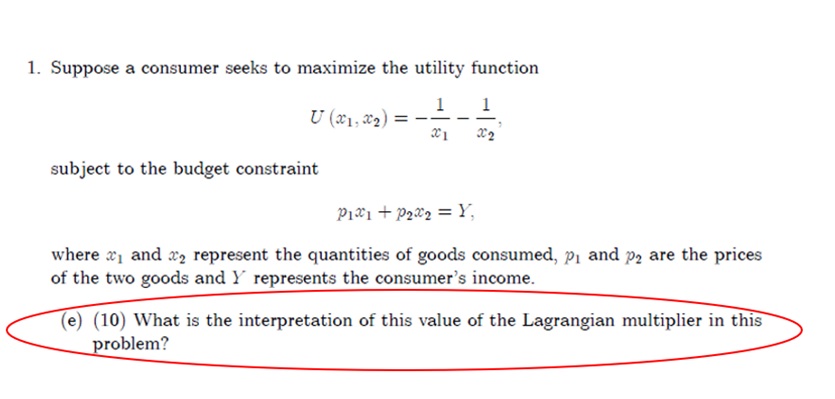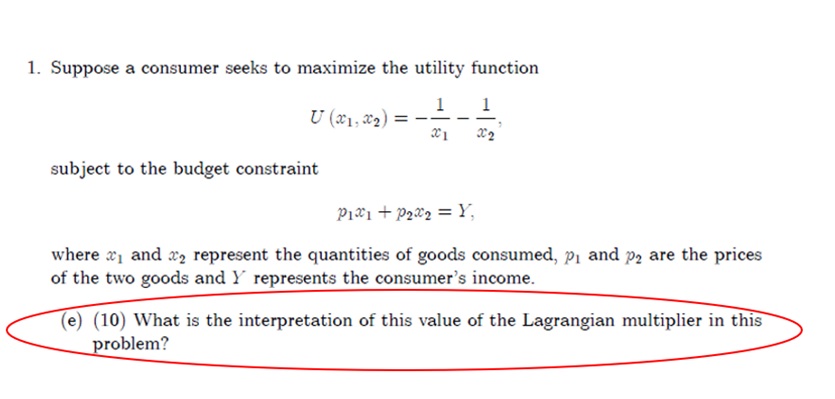Question
Given: Utility Function: U(x 1 , x 2 ) = - 1/x 1 - 1/x 2 Budget Constraint: P 1 x 1 + P 2

Given:
Utility Function:
U(x1, x2) = - 1/x1- 1/x2
Budget Constraint:
P1x1 + P2x2= y
Where: x1, x2= Quantities of Goods Consumed
P1 = Price of Good x1
P2 = Price of Good x2
y = Consumer Income
Course Hero Expert Answer:
For Utility Maximization, we have the following LaGrangian Function:
Z = U(x1, x2) + (y - P1x1 - P2x2)
Z = - 1/x1- 1/x2+ (y - P1x1- P2x2) (1)
For the First Order Condition, we partially differentiate equation w.r.t. x1, x2& , then make them equal to zero.
Z/x12- P1= 0
or
1/x12 - P1= 0
P1= 1/x12
= 1/P1x12
= 1/ P1x12 (2)
Z/x2 = 1/x22- P2= 0
P2 = 1/x22
P2= 1/x22
= 1/P2x22 (3)
Z/ = y - P1x1 - P2x2 = 0
y = P1x1 + P2x2 (4)
This is the First Order Condition for Utility Maximization.

Step by Step Solution
There are 3 Steps involved in it
Step: 1

Get Instant Access to Expert-Tailored Solutions
See step-by-step solutions with expert insights and AI powered tools for academic success
Step: 2

Step: 3

Ace Your Homework with AI
Get the answers you need in no time with our AI-driven, step-by-step assistance
Get Started


